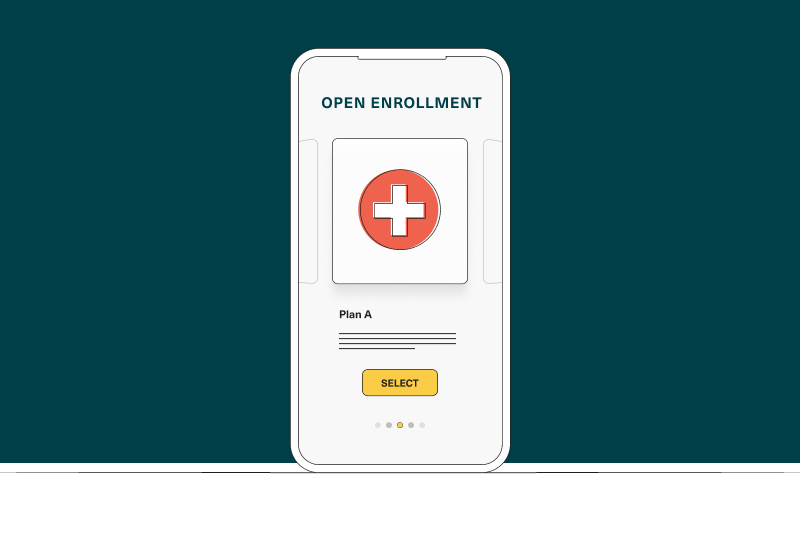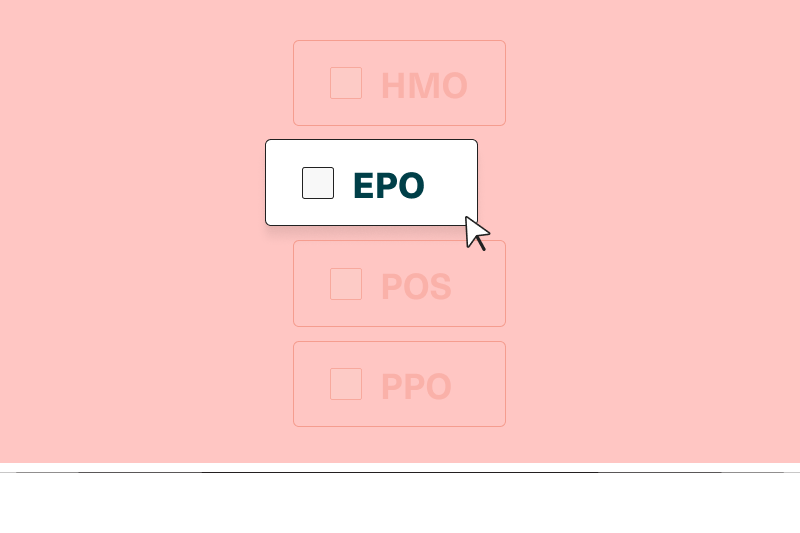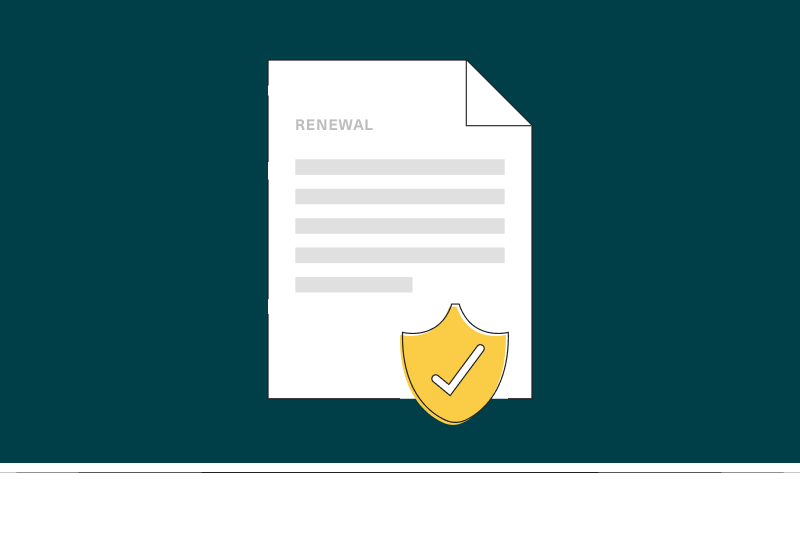Health insurance 101: What is open enrollment?

Open enrollment is a period of time during the year when you can enroll in, make changes to, or cancel your health insurance plan. It only happens once each year. If you miss the open enrollment that applies to you — whether it is the Affordable Care Act’s open enrollment period or the open enrollment period specified by your employer-sponsored health plan — you may have to wait until the next year to make any adjustments to your health coverage.
Keep reading to learn how open enrollment works in the individual market vs. with group health insurance through an employer.
Open enrollment deadlines
Open enrollment deadlines in the individual market
The annual open enrollment period for individual health insurance plans compliant with the Affordable Care Act (ACA) is November 1 to January 15 in most states. This means that individuals who have/are shopping for health plans on the online marketplace have 2.5 months each year to select or make changes to their coverage for the following year.
Some states run their own exchanges as opposed to using the federally run marketplace (HealthCare.gov). Most of the state-run exchanges have the same open enrollment period as HealthCare.gov — November 1 to January 15 — but there are some exceptions:
States with an open enrollment period other than November 1, 2022 to January 15, 2023 for individual coverage in 2023
| State | ACA Open Enrollment Period |
| California | November 1 to January 31 |
| District of Columbia | November 1 to January 31 |
| Idaho | October 15 to December 15 |
| Massachusetts | November 1 to January 23 |
| New Jersey | November 1 to January 31 |
| New York | November 16 to May 11 |
| Rhode Island | November 1 to January 31 |
Note that those who are eligible can enroll in Medicaid and Children’s Health Insurance Program (CHIP) at any time of the year, and Native Americans and Alaska Natives can enroll year-round in ACA plans.
Open enrollment deadlines for employer-sponsored health insurance
Employer-sponsored health plans have different open enrollment periods that may not align with that of the ACA. Employees with job-based health insurance should always check with their company’s human resources (HR) department or leadership to find out when open enrollment is.
Many employers choose to make their group health plan year align with the calendar year — meaning that open enrollment is during the fall, and all health plan changes take effect on January 1. But this is not always the case. For instance, some businesses may choose to do open enrollment in the spring for an effective date in summer. This is known as a mid-year, or off-cycle, open enrollment period. It may be appealing to businesses that are busiest at the end of the year and want to alleviate year-end stress by moving open enrollment to a less hectic season.
The length of open enrollment will vary from one business to another, but it typically lasts a couple of weeks or more. To help employees make informed decisions regarding their health plan, employers should distribute health plan information and answer employees’ insurance questions during this time.
What is a special enrollment period?
A special enrollment period (SEP) is a 60-day period outside of the annual open enrollment period during which you can sign up for or adjust your health insurance. You can apply for a SEP if you experience a qualifying life event (QLE) — a life event that changes your health insurance needs or options, such as getting married or moving to a new state. Special enrollment periods help people avoid large gaps in health coverage when such life changes occur.
Learn more about QLEs and SEPs.
What happens if I miss open enrollment?
If you miss open enrollment, you have to wait until the next year’s open enrollment period to make changes to your coverage unless you:
- Are eligible for Medicaid or CHIP
- Experience a QLE
- Purchase short-term health insurance, which can provide you some level of coverage for up to a year — but is more expensive, less regulated, and less comprehensive than traditional health insurance
Navigating open enrollment as an individual
If you are buying individual health insurance on the ACA marketplace, you should be aware of the ACA open enrollment period dates in your state (listed above). In most states, if you enroll in a plan by December 15, your coverage will begin on January 1. If you enroll after December 15 but before the end of the open enrollment period, your coverage will take effect on February 1.
If you are an employee trying to decide which employer-sponsored health plan to enroll in, you will first need to familiarize yourself with your company’s open enrollment and effective dates. Then, you will need to carefully review the plan options available to you through your job. In order to decide which plan will be best for you and your family, it is important to weigh the flexibility of each plan with its cost. The least expensive plans typically offer the least flexibility in terms of which providers you can see, while the more costly plans usually give you more freedom to see the providers you choose.
Learn more about what to consider when choosing from your employer’s health plans.
Managing open enrollment as an employer
As an employer, you are in charge of making sure your employees have everything they need to make informed decisions about their healthcare coverage. This includes:
- Repeatedly communicating the open enrollment deadline to employees
- Distributing information about the health plans you offer in advance of the deadline
- Proactively educating employees on frequently used health benefits terminology
- Clearly flagging any changes to health plan offerings since the previous year
- Distributing information about additional benefits employees may want to add, change, or drop — such as vision, dental, life, and pet insurance
- Answering employees’ questions about health benefits
- Encouraging employees to consider these ten questions when choosing a health plan
Employers should also be aware that open enrollment is not the only time they will need to engage with health plan administration: Any time a new employee is hired, the employer must grant them a SEP of at least 30 days during which they can either enroll in a plan or decline employer-sponsored coverage. And any time an employee experiences a QLE, they have 30 days to apply for a 60-day SEP during which they can make changes to their plan.
Related: Small but mighty: How to thrive as an HR department of 1
Frequently asked questions about open enrollment
During open enrollment, you can enroll in a plan for the first time, change your current plan selection, add or remove dependents from your plan, or drop coverage completely.
No — during open enrollment, you have the option to choose a new healthcare plan for the next plan year. You may also change your plan during a special enrollment period if you experience a qualifying life event.
If you have an individual ACA marketplace plan, you may change your plan selection during open enrollment by logging into your account on HealthCare.gov (or your state’s state-run exchange if applicable). If you have an employer-sponsored healthcare plan, you should follow your employer’s instructions for selecting a new plan during your company’s open enrollment period.
Medicare has annual enrollment, which runs from October 15 to December 7 and allows anyone with Medicare to make changes to their coverage for the upcoming year. Medicare also has open enrollment, which runs from January 1 to March 31 and is only for those currently enrolled in a Medicare Advantage plan — during this time, they can switch to original Medicare or make changes to their Medicare Advantage plan.
Open enrollment is only once a year to prevent people from waiting until they are sick, injured, or high-risk to purchase health insurance. The ability to sign up for health insurance year-round can create a situation called adverse selection, in which high-risk/unhealthy people purchase health insurance, while low-risk/healthy people opt not to. This drives up healthcare costs for insurers, which drives up premiums for policyholders.






